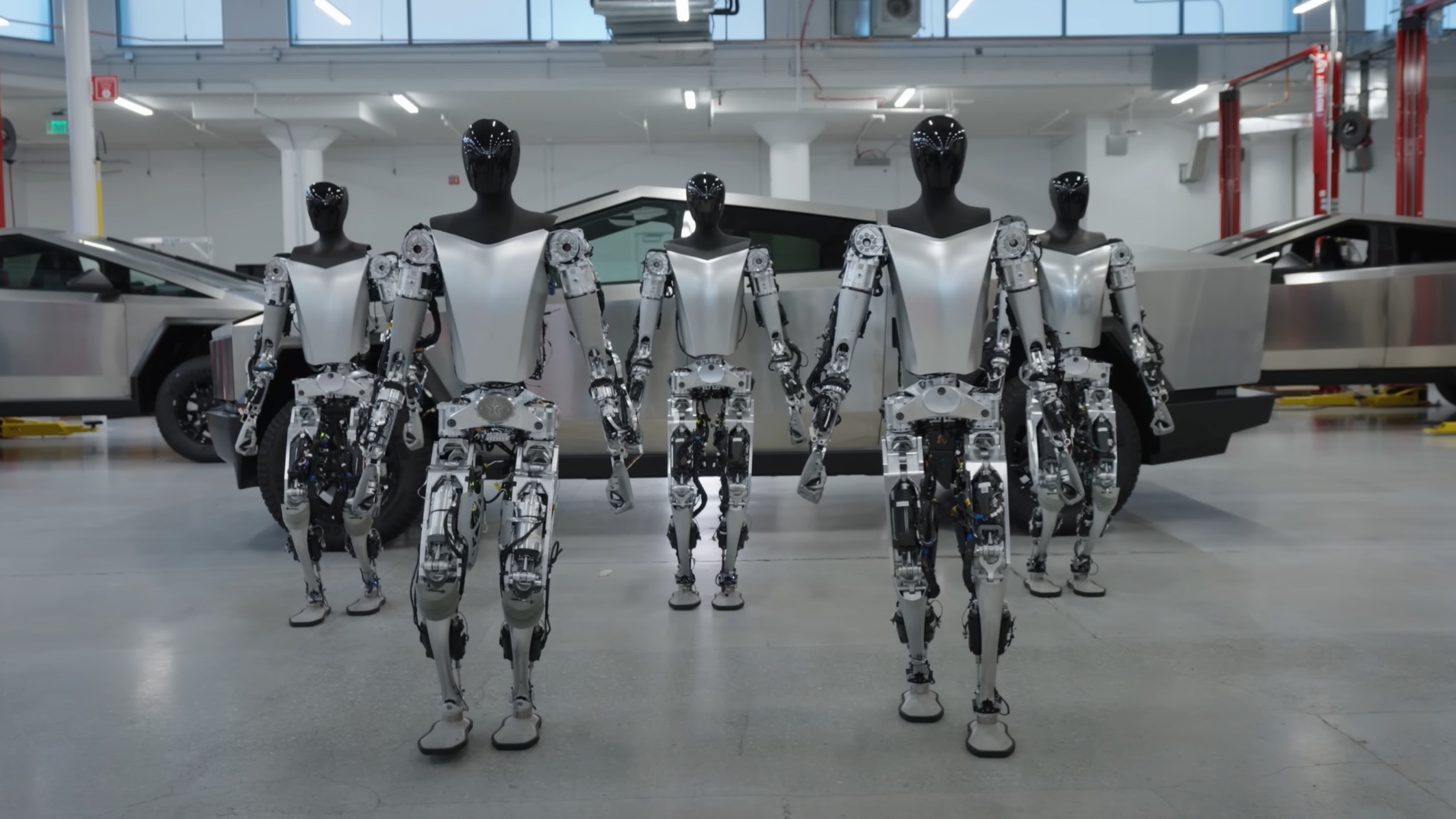Understanding Dysprosium: Its Critical Role And Future In Electric Vehicles

Table of Contents
Dysprosium's Unique Properties and its Application in EV Motors
Dysprosium's unique magnetic properties are what make it so essential for the powerful and efficient permanent magnets found in electric vehicle motors. Its exceptional magnetic characteristics contribute significantly to the overall performance and efficiency of EVs. These properties include:
-
High coercivity: This means dysprosium resists demagnetization, even under high temperatures and intense loads experienced during the operation of an EV motor. This resistance is critical for maintaining consistent motor performance and preventing unexpected failures. High coercivity ensures the magnet retains its strength, leading to more reliable and powerful motor operation.
-
High magnetic anisotropy: Dysprosium magnets maintain their strong magnetic field strength even when subjected to external forces. This is vital in ensuring consistent torque output and preventing performance degradation under varying operating conditions. This property directly impacts the overall efficiency and longevity of the electric motor.
-
Used in Neodymium magnets (NdFeB): Neodymium magnets, alloyed with iron and boron (NdFeB), are ubiquitous in EV motors due to their high power density. Dysprosium is often added to these magnets to enhance their performance characteristics, further boosting motor efficiency and power output. The addition of dysprosium is a crucial factor in achieving the high performance levels needed for modern electric vehicles.
The inclusion of dysprosium significantly enhances the performance of these NdFeB magnets, improving motor torque, efficiency, and ultimately extending the vehicle's range. A more efficient motor translates to longer driving distances on a single charge, a key selling point for EVs.
The Supply Chain Challenges and Geopolitical Implications of Dysprosium
The limited geographical distribution of dysprosium presents a significant challenge to the EV industry. Mining and processing are heavily concentrated in specific regions, most notably China, creating vulnerabilities in the supply chain. This concentration presents several key risks:
-
Risk of supply chain disruptions and price volatility: Dependence on a single or few sources leaves the EV industry susceptible to disruptions from geopolitical instability, natural disasters, or trade disputes. Any disruption in the supply of dysprosium can directly impact the production of electric motors and the manufacturing of EVs.
-
Geopolitical implications and potential for trade conflicts: The concentration of dysprosium resources creates geopolitical leverage, potentially leading to trade conflicts and impacting the price and availability of this critical material. Secure and reliable access to dysprosium is crucial for ensuring the long-term viability of the EV industry.
-
The need for diversification of dysprosium sources and responsible mining practices: Diversifying the sources of dysprosium and implementing responsible mining practices are critical to mitigating these risks and ensuring a sustainable supply for the future. This includes investing in exploration and development of new dysprosium deposits in other regions and promoting environmentally sound mining techniques.
These supply chain challenges directly impact the production cost and availability of EVs, potentially slowing down the transition to electric mobility. Addressing these challenges requires a multi-faceted approach involving international cooperation, investment in exploration, and a commitment to sustainable mining practices.
Research and Development: Finding Alternatives and Improving Efficiency
Recognizing the challenges associated with dysprosium, significant research and development efforts are focused on mitigating the reliance on this critical rare earth element. These efforts include:
-
Exploring less dysprosium-dependent NdFeB magnet compositions: Researchers are actively exploring alternative compositions of NdFeB magnets that require less dysprosium while maintaining acceptable performance levels. This includes investigating different alloying elements and optimizing manufacturing processes.
-
Investigating alternative magnet materials (e.g., ferrite magnets, Alnico magnets): While not as powerful as NdFeB magnets, alternative materials like ferrite and Alnico magnets are being investigated as potential replacements or supplements in certain EV motor applications. These materials may offer a more readily available and geographically diverse supply chain.
-
Improving magnet recycling technologies to reduce reliance on new mining: Recycling existing magnets is a crucial strategy for reducing reliance on new mining and minimizing environmental impact. Advancements in magnet recycling technologies are essential for achieving a circular economy for rare earth elements.
These advancements hold the potential to significantly reduce or even eliminate the need for dysprosium in future EV motors, improving the sustainability and resilience of the electric vehicle industry.
The Future of Dysprosium in Electric Vehicles
The long-term outlook for dysprosium demand in the EV industry is strongly tied to projected EV sales growth and technological advancements. Several key factors shape this future:
-
Increased demand projected with the rise in electric vehicle adoption: As the global adoption of electric vehicles accelerates, the demand for dysprosium is expected to rise significantly, increasing pressure on existing supply chains.
-
The need for sustainable and responsible sourcing practices: Sustainable sourcing, including responsible mining practices and recycling efforts, will be increasingly crucial to ensure the long-term availability of dysprosium without causing environmental damage.
-
The potential for technological breakthroughs to reduce or eliminate the need for dysprosium: Continued research and development efforts towards alternative magnet materials and improved recycling technologies could dramatically reduce or even eliminate the need for dysprosium in the future.
Conclusion
Dysprosium plays a critical role in the performance and efficiency of electric vehicle motors, but its limited supply and geographical concentration pose significant challenges. Addressing these supply chain issues and investing in research and development of alternative technologies are crucial for the continued growth of the EV industry. Understanding the significance of dysprosium in the electric vehicle sector is vital for both consumers and industry stakeholders. Learn more about responsible sourcing and technological advancements to ensure a sustainable future for electric mobility and reduce our dependence on this rare earth element. The future of electric vehicles depends on finding innovative solutions for securing a reliable and sustainable supply of dysprosium and its potential replacements.

Featured Posts
-
 Assessing The Influence Of Tax Credits On Minnesotas Film Sector
Apr 29, 2025
Assessing The Influence Of Tax Credits On Minnesotas Film Sector
Apr 29, 2025 -
 Russias Military Posture Assessing The Risks To European Security
Apr 29, 2025
Russias Military Posture Assessing The Risks To European Security
Apr 29, 2025 -
 Your Guide To Getting Capital Summertime Ball 2025 Tickets
Apr 29, 2025
Your Guide To Getting Capital Summertime Ball 2025 Tickets
Apr 29, 2025 -
 Milly Alcocks Supergirl Role Netflixs Sirens Trailer Reveals Cult Connection With Julianne Moore
Apr 29, 2025
Milly Alcocks Supergirl Role Netflixs Sirens Trailer Reveals Cult Connection With Julianne Moore
Apr 29, 2025 -
 The China Factor Analyzing Market Difficulties For Bmw Porsche And Other Automakers
Apr 29, 2025
The China Factor Analyzing Market Difficulties For Bmw Porsche And Other Automakers
Apr 29, 2025
